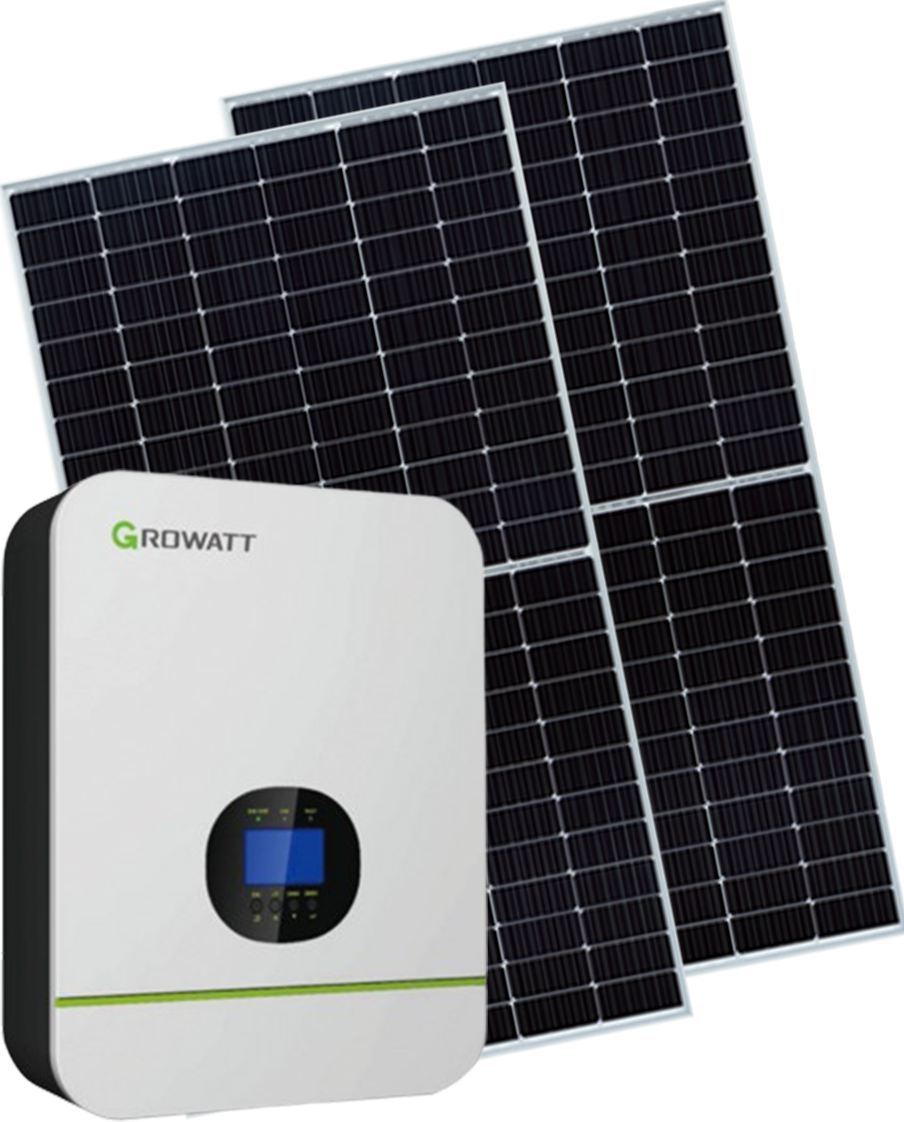When selecting an inverter, consider the following key factors to make an informed decision:
1. Inverter Type:
• Grid-Tied Inverters: Suitable for solar systems connected to the grid, converting DC (Direct Current) into AC (Alternating Current) and feeding excess power back to the grid
Off-Grid Inverters: Ideal for standalone solar systems not connected to the grid, requiring battery storage.
Hybrid Inverters: Capable of switching between grid-tied and off-grid modes, often integrated with battery storage systems for added flexibility.
2. Power Capacity:
• Choose an inverter with a power capacity that matches your load requirements. Ensure the inverter’s rated power is equal to or greater than your maximum load needs. It’s advisable to select a slightly higher capacity to account for future expansion.
3. Conversion Efficiency:
• The higher the inverter’s conversion efficiency, the less energy is lost during the conversion process. High-quality inverters typically have an efficiency of 95% or above.
4. Input Voltage Range:
• The input voltage range of the inverter should match the output voltage of your solar panel array. Consider the open-circuit voltage and operating voltage of your photovoltaic system to ensure they are within the inverter’s supported range.
5. MPPT Functionality:
• Maximum Power Point Tracking (MPPT) is a critical feature for efficient inverters. MPPT optimizes the output of the solar panels, maximizing the system’s energy generation. Check if the inverter supports multiple MPPT inputs, which is especially useful for complex solar system layouts.
6. Output Waveform:
• Pure Sine Wave Inverters: Provide power quality equivalent to the grid, suitable for all types of appliances, particularly sensitive equipment.
• Modified Sine Wave Inverters: Suitable for simple devices, more affordable but not recommended for equipment requiring high power quality.
7. Cooling Method:
• Inverters may use fan cooling or natural convection cooling. Fan cooling offers better temperature control but may generate noise; natural cooling is quieter and ideal for environments where silence is important.
8. Display and Monitoring:
• Check if the inverter has a display screen or online monitoring capabilities for real-time viewing of system status, energy generation, and fault diagnostics. High-end inverters may also support remote monitoring via mobile apps.
9. Quality Certifications and Standards:
• Ensure the inverter has relevant international or national certifications, such as CE, UL, etc. These certifications guarantee the product’s quality and safety.
10. Brand and Warranty:
• Choose reputable brands with warranty, as these usually offer better quality assurance. Warranties typically range from 1 to 2 years or more, with some high-end brands offering even longer coverage.
11. Installation and After-Sales Service:
• Professional installation of the inverter is essential for safety and performance. Selecting a supplier that provides good after-sales service is also crucial for receiving timely support in case of system issues.
By considering these factors comprehensively, you can select the inverter that best meets your needs.
(Taken from the linked in profile of Kiwi Deng, Specialist in off-grid inverters and rechargeable batteries).





